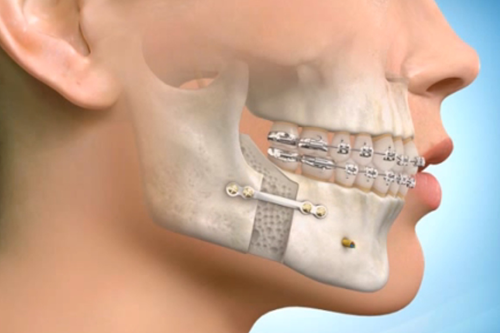
Orthognathic surgery, often known as a jaw operation, corrects anomalies in the jaw bones and realigns the jaws and teeth to improve their functions. Performing these alterations may also improve your facial appearance.
About orthognathic surgery
If you have jaw abnormalities that cannot be resolved with orthodontics alone, undergoing a medical surgery to correct your jaw may be a viable option. Your orthodontist can collaborate with your oral and maxillofacial expert to create a treatment plan that is right for you.
Who qualifies for orthognathic surgery?
After puberty ends, usually around the ages of 14 to 16 for girls and 17 to 21 for boys, orthognathic surgery can be performed.
You can consult your dental doctor or visit a dental clinic in Hyderabad. Or you can request an appointment at Apollo Dental, Hyderabad, by calling 18001020288.
Why is orthognathic surgery conducted?
A surgery on the jaw could help to:
- Makes gnawing and biting easier.
- Issues with gulping or speaking can be addressed.
- Excessive tooth wear and tear or disintegration can be avoided.
- When the molars touch but the front teeth don’t, this is known as right bite fit or jaw conclusion difficulties (open chomp).
- Little jaws, underbites, overbites, and crossbites are examples of right face lopsidedness (deviation).
- Relieves pain caused by a jumbled temporomandibular joint (TMJ) and other jaw problems.
- Resolves any facial injuries or congenital disabilities.
- Provides relief for obstructive sleep apnea.
How is orthognathic surgery conducted?
Orthognathic surgery is usually conducted inside the mouth, thus no scars on the jawline, jaw or around the mouth are visible. In any case, little access points outside your mouth may be expected at times.
What are the different types of orthognathic surgery?
- Maxillary osteotomy surgery is performed on the upper jaw.
- Mandibular osteotomy surgery is performed on the lower jaw.
- Genioplasty surgery is performed on the chin.
What are the benefits of orthognathic surgery?
Rectifying the arrangement of your jaws and teeth can result in:
- Adjusted appearance of your lower face
- Enhanced capacity of your teeth
- Better biting and gulping functions
- Improvement in speech
What are the risks of orthognathic surgery?
Dangers of the medical procedure might include:
- Disease
- Nerve injury
- Jaw crack
- Backslide of the jaw to the first position
- Issues with chomp fit and jaw joint agony
- Need for a root canal treatment
- Loss of a piece of the jaw
Conclusion:
If you’re thinking about having jaw surgery, the first step is to make sure you’re making the right decision. A jaw surgical operation is a major medical procedure that might disrupt your life for weeks or months. You have the right to know what a medical operation will entail for your life. You should also be aware of what to expect from a dental operation on your jaw. Discuss your choices and assumptions with your medical service providers.
The majority of minor dental misalignments can be corrected with orthodontic therapy alone. However, some misalignments necessitate medical intervention.
Jaw anomalies can be caused by natural reasons (existing at birth), an inherited tendency of the jaws to develop at a different pace, a jaw injury or a late development spree.
Starting to repair the jaws takes around a month and a half, while full recovery can take up to a year.















































